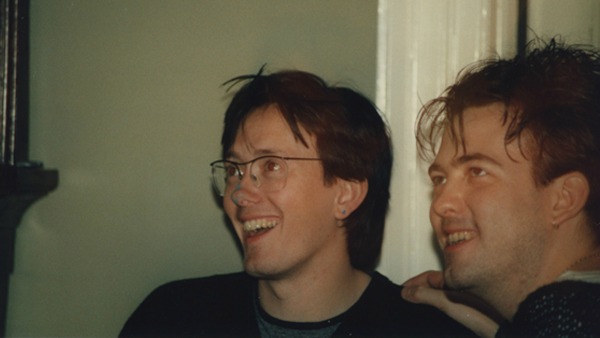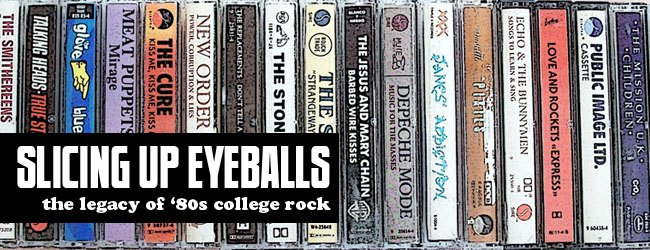
Despite the dour material, recording The Cure’s epic Disintegration album was a “very happy and jokey” time for the Robert Smith-led band, recalls former keyboard player Roger O’Donnell in a new 11,000-word essay on the 20th anniversary of the recording of that classic record.
As promised, O’Donnell — who played in The Cure from 1987 to 1990, and then again from 1995 until 2005 — today posted his memories and photographs from those 1989 recording sessions and the subsequent worldwide Prayer Tour, which saw the onetime cult band fully graduate into a chart-topping stadium act.
In the piece titled “Disintegration: Memories of Making the Album…,” O’Donnell traces his own involvement with the band, beginning with his role in the Kiss Me, Kiss Me, Kiss Me tour and on through the demo and recording stages of Disintegration. Posted throughout the narrative are snapshots of the band, as well as a snippet of O’Donnell’s demo for “The Other Side,” which would become “Lovesong” B-side “Fear of Ghosts.”
O’Donnell characterizes Disintegration as “a fantastic collection of songs from a band at their peak of creating and performing.” At the time, though, “we had no idea, it was just the next Cure record to us.” He looks back fondly on the sessions, writing:
“I remember very clearly laughing and joking and fooling around in the control room while Robert was singing ‘Disintegration’ and then all of us trying to be serious when he came in to listen back. I don’t know how he put up with it really. It was never a serious atmosphere in the studio and when you think about the album and how dark it is, I’m sure people think we were sitting around slitting our wrists with candles and chains hanging from the walls.”
Nevertheless, that gloom-and-doom would rear itself once the Cure took Disintegration on the road; O’Donnell describes the Prayer Tour this way: “That band on stage at that time was amazing; it was so sad, however, that barely anyone spoke to anyone else after the shows and it was such a horrible experience off-stage.”
Other highlights from O’Donnell’s Disintegration memories:
- The only track not used on the album or as a B-side was a Porl Thompson demo called “Another Delirious Night,” which is scheduled to be included on one of the bonus discs on the upcoming Disintegration reissue.
- The band disliked “Lovesong”: “I remember there being very heated discussions about it being released we didn’t really like it that much and it went on to the be the most successful single in the band’s history.”
- Cure legend that Smith’s Disintegration lyrics were burned when his room caught fire apparently isn’t true: “Two sources have told me that a leather satchel of lyrics and photos was indeed saved along with most other things.”
- Founding member Lol Tolhurst “was drunk most of the time” and “barely played anything on the record and I think some of the things he did play I had to play again while he wasn’t there.” Tolhurst did, however, contribute the foundation of “Homesick,” although “if we ever said that in the studio Robert would get angry and threaten to take it off the record.”
- Smith hadn’t planned to tour Disintegration; it wasn’t until after the record was finished that O’Donnell received a letter from the band leader saying “we would be touring the album that year but as a five piece and Lol was no longer in the band.”
Read Roger O’Donnell’s entire essay on the making of Disintegration here.
PREVIOUSLY ON SLICING UP EYEBALLS
- The Cure’s ‘Disintegration’ 3CD reissue delayed by a month
- The Cure’s ‘Disintegration’ expanded 3CD reissue to be released Feb. 16
- Ex-Cure keyboardist Roger O’Donnell to post ‘Disintegration’ memories on Dec. 28
- Roger O’Donnell reconsiders posting memories of The Cure’s ‘Disintegration’
- Roger O’Donnell to share memories of The Cure’s ‘Disintegration’













It’s very clear that Roger prefers BORIS WILLIAMS to the limited jason cooper! and that’s why he was sacked off of the band!
Are you talking about when Roger left the band for the second time?
Do you know if the article is still accessible? I’m having difficulties finding it.
It is archived on Internet Archive’s Wayback Machine.